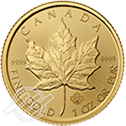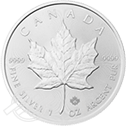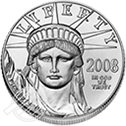Could the Fed Return to Quantitative Easing?
The question of whether or not the Fed would actually raise interest rates for the first time in almost a decade was answered in December. After several months of speculation, the central bank stuck to its plan of an initial rate hike by the end of 2015.
Was this rate hike justified? Maybe yes, maybe no. Certainly debatable…
Now that a new year has begun, investors have been trying to gauge the central bank’s intentions on further interest rate hikes. The generally accepted thought was that the Fed would hike rates four times this year. Small, incremental rate hikes designed to bring monetary policy closer to normalization in baby steps. The central bank appears to be targeting a Fed Funds rate of somewhere around 3.4 percent in 2018.
If a Fed Funds target of 3.4 percent is reached, it’s still a relatively low rate. Whether or not this level is seen a few years down the road is debatable.
The Federal Reserve is already acknowledging in early 2016 that it is not in “automatic hiking mode” and that it will base any decisions on further rate increases on economic data and conditions.
After global markets began the new year on very weak footing, seeing heavy losses in equity markets, the likelihood of a March 2016 rate hike by the Fed may have diminished.
Is this a big surprise? Not really…
The Fed began the tightening cycle and put an end to the era of zero interest rates at a time when China is taking significant measures to boost its economy and the European Central Bank is still printing money trying to boost its own. A “divergence in monetary policies” is putting it lightly.
The U.S. and emerging markets around the globe have felt the effects of China’s slowdown. Commodity prices have sunk and the threat of widespread deflation is very real.
Japan just announced a negative interest rate policy. Japan has been battling deflation for over a decade and has been unable to get its economy out of the mud. Who’s to say that a similar situation could not develop in the U.S. or elsewhere?
What if it did? How might policy makers deal with such a situation?
A return to quantitative easing is one possibility…
Get enough money out there in circulation and consumers are bound to spend, right?
Charge banks interest to hold their money and they’ll be more likely to lend, right?
In our opinion, should the U.S. economy really begin to stutter again, should the risk of another recession increase, the Fed is not likely to stand idly by. The central bank could simply take rates back down to zero or could once again use QE in an effort to boost economic activity.
With deflationary risks seemingly increasing and with the possibility of a return to recession, investors have largely bailed on stocks to begin the new year. There could be further selling to go and some markets have already entered bear market territory.
Under present conditions, gold has seen renewed buying interest. Should the Fed eventually go back to QE, the dollar, along with risk assets, could potentially see a substantial decline. Gold, silver and other perceived safe haven assets could potentially stand to benefit.
Would you rather buy gold for less than $1200 an ounce or would you rather buy it for $2000, $2500, $5000 an ounce or possibly more?
Now might be a good time to consider an allocation in physical gold, silver and other precious metals. Adding these key metals to your portfolio has never been easier. An IRA account may be one of the most effective ways to build a substantial holding of physical gold or silver. Don’t wait for gold prices to rise significantly from current levels. Explore your options now. Our precious metals account executives can answer any questions you may have about buying physical precious metals and can even assist you in using your IRA or setting up a precious metals IRA. Call us today at 1-800-341-8584.
Tags: add gold to my ira, add silver to my ira, advantage gold, allocation in precious metals, dollar collapse, fed funds, interest rate, quantitative easing, rate hike


